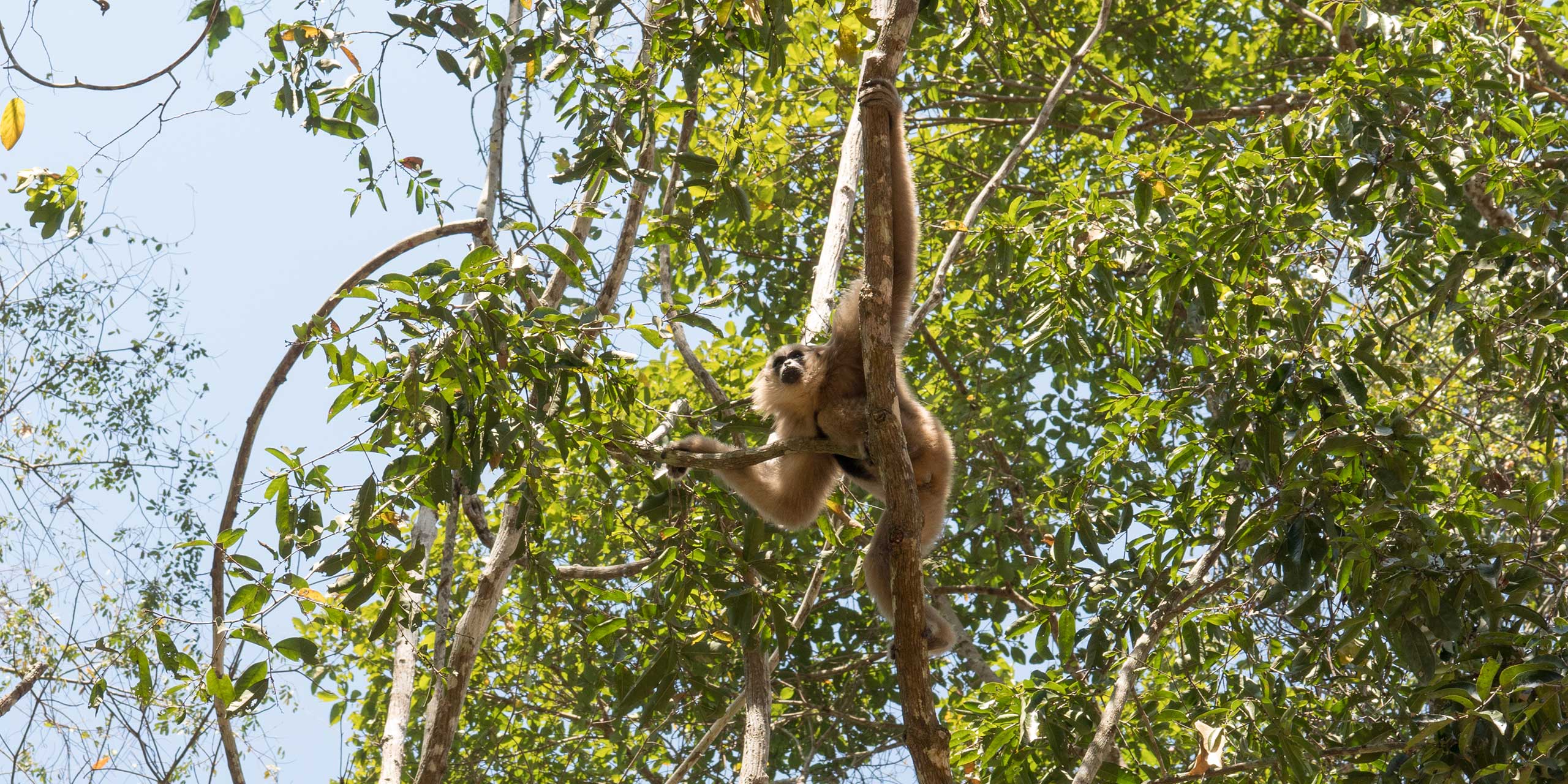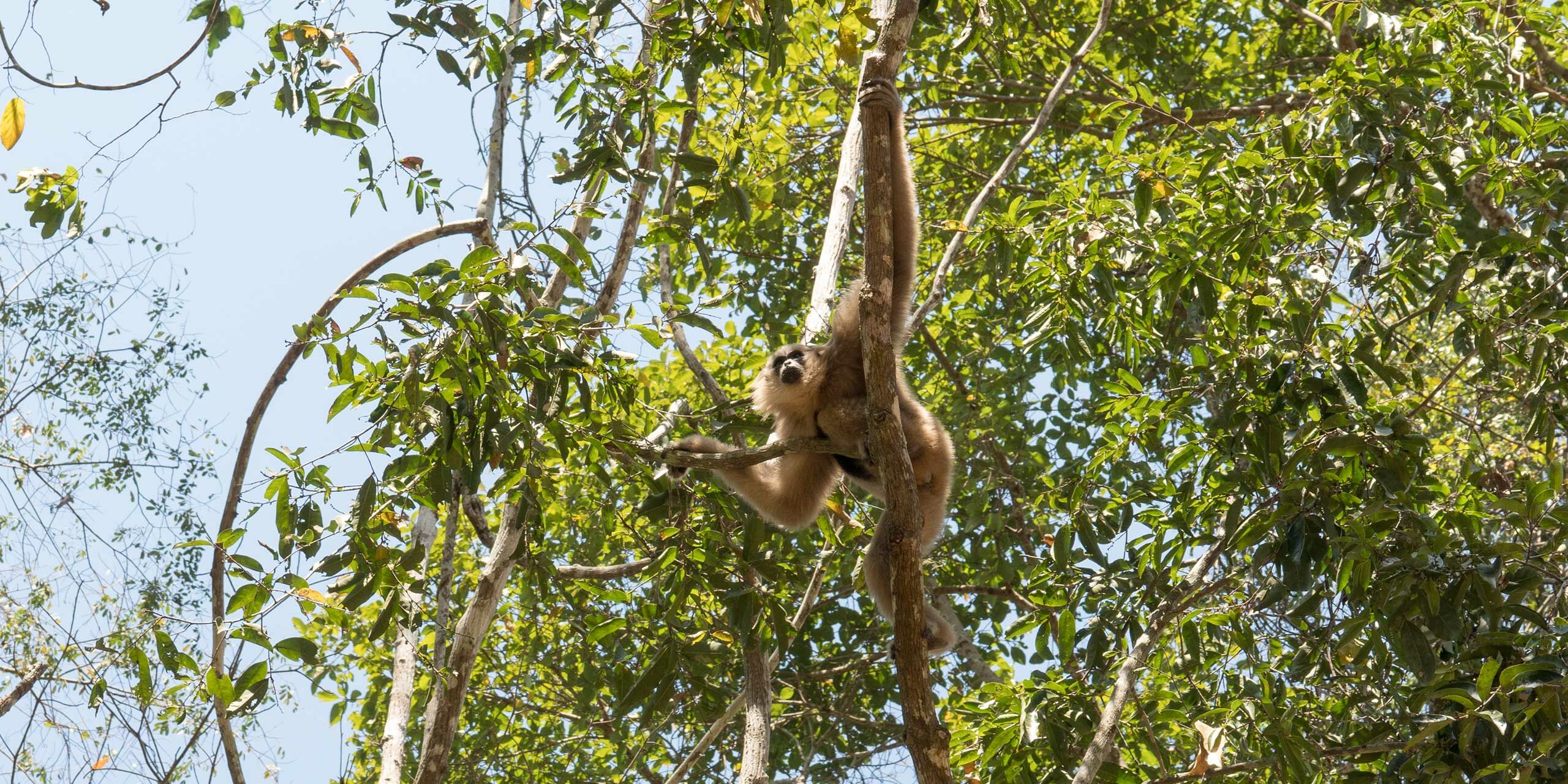
Before it became Cambodia’s most famous tourist attraction, Angkor Wat teemed with wildlife — monkeys, deer, and even wildcats. Due to the efforts of the Wildlife Alliance, gibbons, leopards, and even otters now call the Angkor Archeological Park home.
Last week the Wildlife Alliance marked eight years of success in its project to reintroduce wildlife to the Angkor Archaeological Park, including the colorful oriental pied hornbill and the noisy charms of the pileated gibbon.
Led by the government backed Apsara National Authority (ANA) together with the Forestry Administration and Wildlife Alliance, the program actually began in 2013 and today they can proudly say that they have released 40 animals into the region.
“The project aims to reverse this loss by reintroducing wildlife within the Angkor landscape,” the Wildlife Alliance told the Phnom Penh Post. All animals released within the Angkor landscape were rescued from the illegal wildlife trade or born in captivity to rescued parents, a press release from the Wildlife Alliance states. They are then rehabilitated at Phnom Tamao Wildlife Rescue Centre in Takeo province before being released into the well-protected habitat.
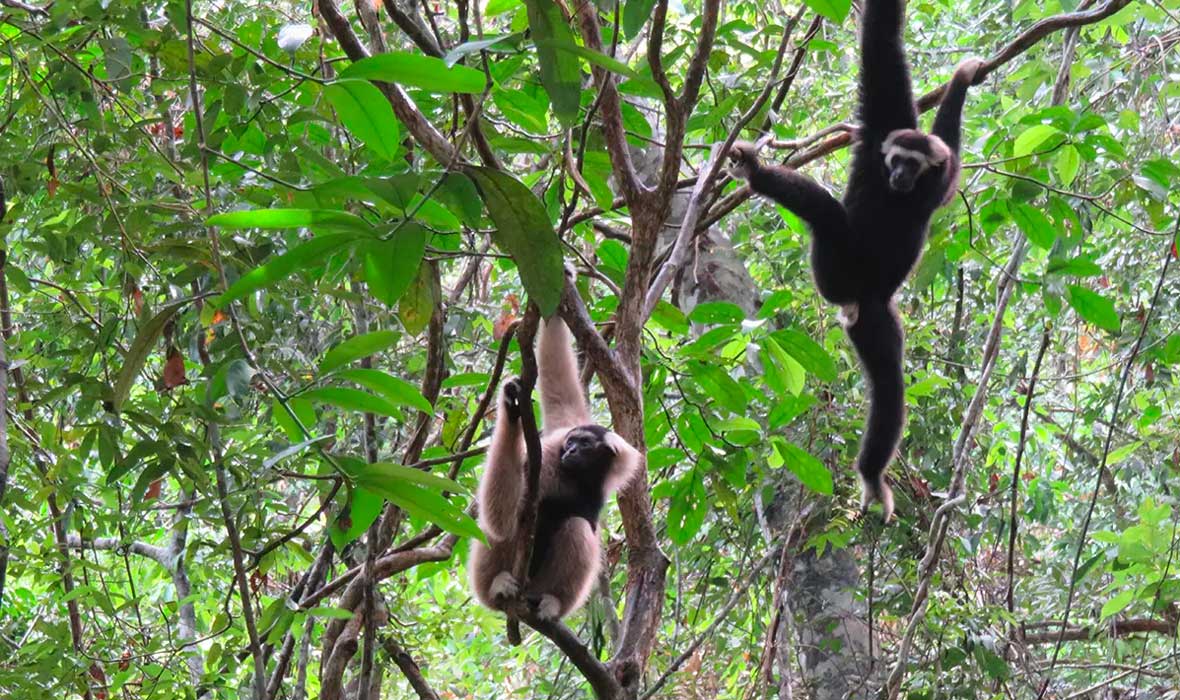
Of particular interest to travelers to Angkor Wat should be the pileated gibbon. Poaching in the 20th century removed the species from the area and it is currently on the International Union for Conservation of Nature (IUCN) Red List. A fourth pair of gibbons has been transferred to acclimatise to the forest before their release, the Wildlife Alliance noted.
Chou Radina, Apsara Authority’s deputy director of the Department of Forestry Management, Cultural Landscape and Environment, noted that they have released three pairs of gibbons that have adapted well to the forest environment.
“They have given birth to a few babies. Now there are twelve gibbons,” he said.
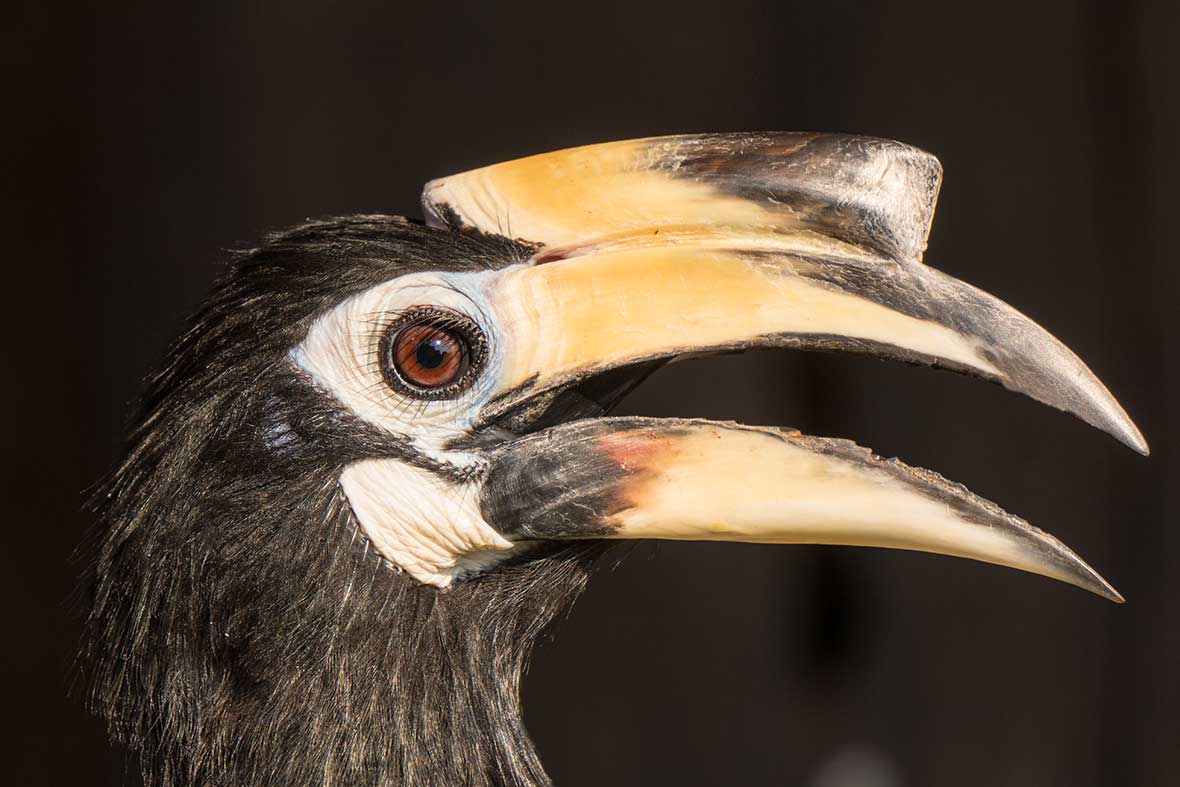
Last year in December at the height of the Covid-19 pandemic saw the group release its first wildcat, a pair of leopards. According to the Wildlife Alliance, the cats have not returned for supplementary feedings, indicating that their survival instincts have kicked in and they are doing well.
Other animals have also been released, including silvered langurs, palm civets and red muntjacs. In 2019 Angkor welcomed a family of smooth-coated otters, including two new pups born last year.
For twitchers, or birdwatchers, a pair of Oriental Pied Hornbills now fly through Angkor’s forests and more hornbill releases are planned.
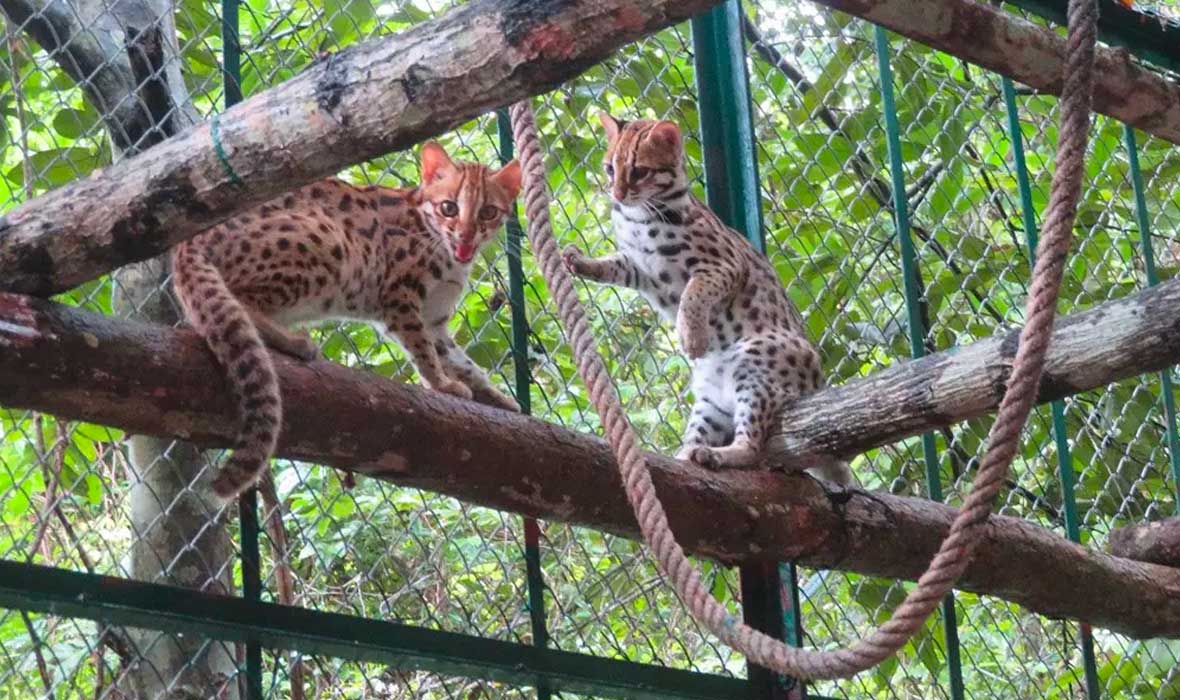
But, excited as travelers might be to catch a rare glimpse (or sound, in the case of the gibbons), Chou has a warning: “I would like to ask [all] tourists and people living nearby: please do not touch, disturb and most especially do not feed the animals,” he said. “When you feed them, they become habituated to people, meaning they won’t adapt to life in the wild.”
The Wildlife Alliance have become known to international travelers not just for their good work in protecting Cambodia’s wildlife but also for supplying travelers with interesting experiences. At the luxury Shinta Mani Wild tented camp, designed by starchitect Bill Bensley, and the Cardamom Tented Camp in the Cardamom mountains travelers can join the Wildlife Alliance as they parole the rivers and valleys for bushmeat poachers.

